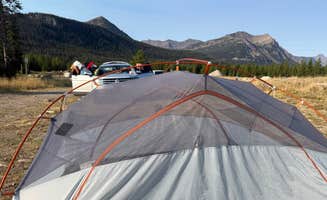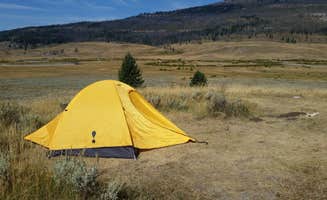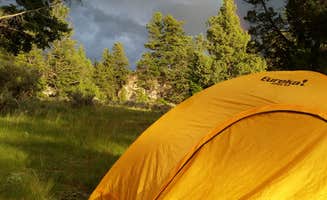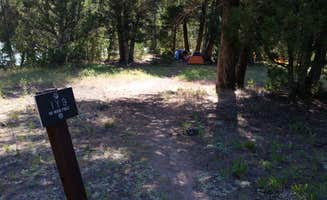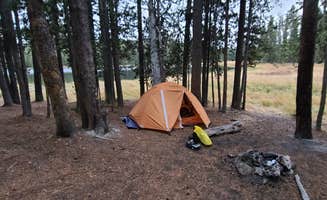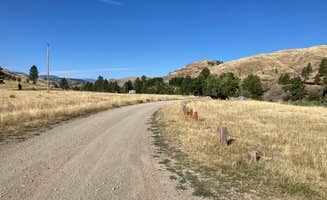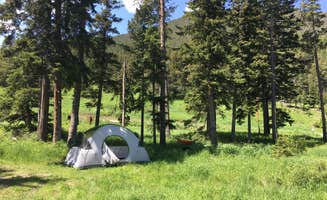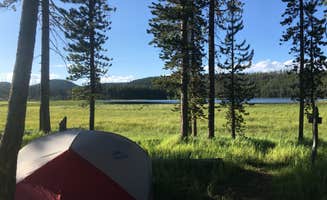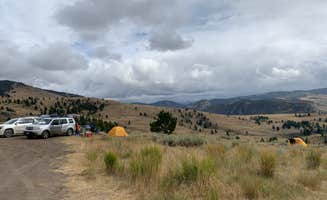Primitive camping opportunities surround Cooke City, Montana, with over 20 dispersed sites located within a 30-mile radius. The area sits at elevations ranging from 7,600 to 9,800 feet, creating dramatic temperature variations even in summer when nighttime temperatures can drop below freezing. Most tent campsites near Cooke City remain accessible from late May through early October, depending on snowfall patterns.
What to do
Wildlife viewing at dawn/dusk: Slough Creek backcountry sites in Yellowstone National Park offer exceptional wildlife opportunities. "We saw a bear, moose and deer" at Lady of the Lake Trail on Lulu Pass, according to camper Stefania M.
Fishing in mountain streams: Bring fishing gear to access numerous creeks and streams. At 2S1 Yellowstone National Park Backcountry, campers note the site "appears to be a popular fishing location as well" with plenty of nearby stream access.
Hiking from camp: Multiple sites connect directly to trail systems. At Pilot Creek Dispersed Camping, Lauren C. mentions "multiple dispersed sites that back up to the Pilot Creek Trail" making it convenient for day hikes directly from your tent site.
Mountain photography: Set up at sites with panoramic views. "Very nice sites... absolutely stunning mountain views" reports Ryan L. about camping options on Travertine Road outside Yellowstone.
What campers like
Isolation and quiet: Many tent campsites near Cooke City, Montana provide significant separation from other campers. Henry W. noted that Lady of the Lake Trail on Lulu Pass "was quiet the night we stayed here and had good views of the surrounding mountains."
Bear-proof food storage: Several backcountry sites include secure food containment. At 2S3 Slough Creek - Yellowstone NP, Dexter I. confirms "the cooking area has a bear pole for hanging your food but you will not need it as the site has a bear proof food locker."
Creek proximity: Many sites offer water access for filtering. 2S2 Hornaday Creek campsite "has an excellent water source right next to the tent and cooking areas" according to reviews, allowing for convenient water collection.
Flat terrain for tents: Despite the mountainous environment, most sites feature level areas for setup. At 2S6 Backcountry Campsite, Dexter I. describes how the site "sits on a flat bench above the valley with some lodgepole pines for shade."
What you should know
Variable road conditions: Access to many sites requires navigating rough terrain. Ron D. reports Lady of the Lake Trail "starts out very nice gravel but then gets pretty rough and rocky," a common challenge for accessing tent sites in this region.
Extreme temperature swings: Prepare for cold nights regardless of season. Henry W. reported that at Lady of the Lake "it was very cold at night even in August," suggesting campers bring appropriate sleeping gear year-round.
Limited site availability: First-come, first-served sites fill quickly during peak season. At Travertine Road Dispersed, one camper noted, "There are 3 or 4 spots in this area. I came in Labor Day weekend at 6:30 pm and was able to get a spot."
Wildlife precautions: Proper food storage remains essential. Brodie B. noted "Strange to see so many dead elk carcasses all around but it's Montana so not surprised" when camping at Travertine Road, indicating active wildlife in the region.
Tips for camping with families
Check campsite spacing: Select areas where children can explore safely. Rebecca B. from Pilot Creek Dispersed Camping notes there are options for different needs: "there is a big open area with little privacy if it is crowded. But it's great for groups... But there are at least half a dozen wooded spots, setback."
Choose sites with nearby activities: Target locations with gentle hiking trails and water features. Ron D. shared his experience at Pilot Creek: "I watched cows grazing down the power line clearing through the trees and at one point watched eight cows walking by single file right by my site."
Monitor weather forecasts: Mountain weather changes rapidly at these elevations. "The inside of the truck bed had frost in the morning (22°!)" reported Ellie M. at Travertine Road, highlighting the need for extra warm sleeping gear for children.
Look for sites with natural boundaries: Find locations where children can roam within defined areas. Custer-Gallatin National Forest sites often feature natural boundaries like creeks that help define safe play zones.
Tips from RVers
Assess access routes carefully: Many forest roads become impassable for larger vehicles. Jeremiah L. warns about Travertine Road: "the dirt road you have to drive on to access it is super bumpy due to many potholes and large rocks. This is likely no problem for a truck or suv but my sedan had a difficult time getting up the road."
North Fork Campground alternatives: When seeking established campgrounds with RV amenities, Ashley M. notes that Buffalo Bill State Park offers "a pull through site with electricity but no water hookup. Potable water was available throughout the park, however."
Consider site orientation: Position RVs for wind protection in open areas. "It was a little bit windy but absolutely stunning mountain views" notes Ryan L. about positioning at Travertine Road sites.
Plan for limited turning radius: Forest roads often lack turnaround space for larger vehicles. Sites closer to main roads provide easier access and exit routes for RVs over 25 feet.


